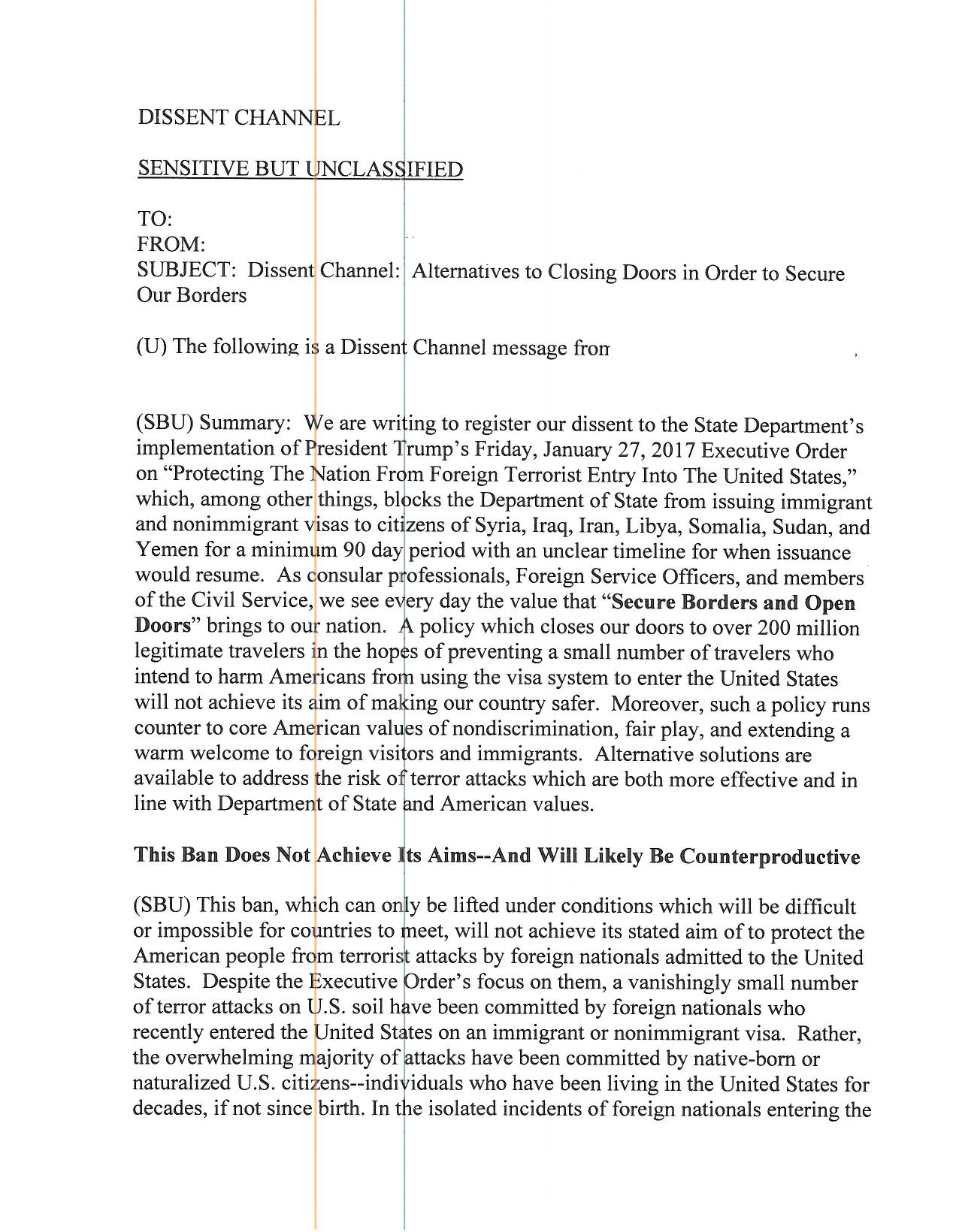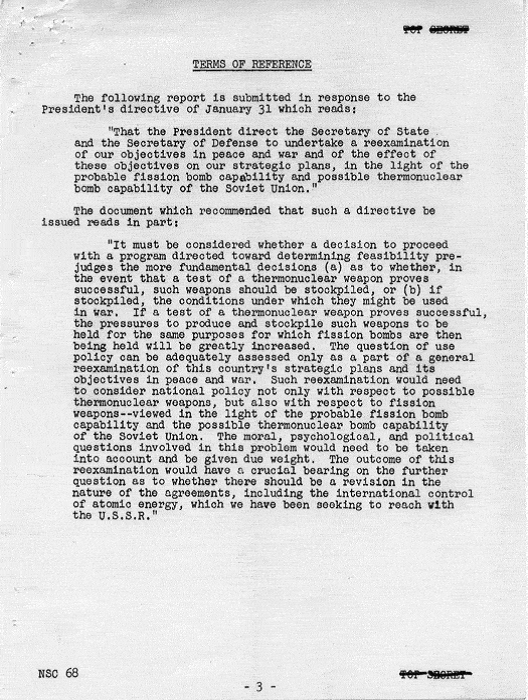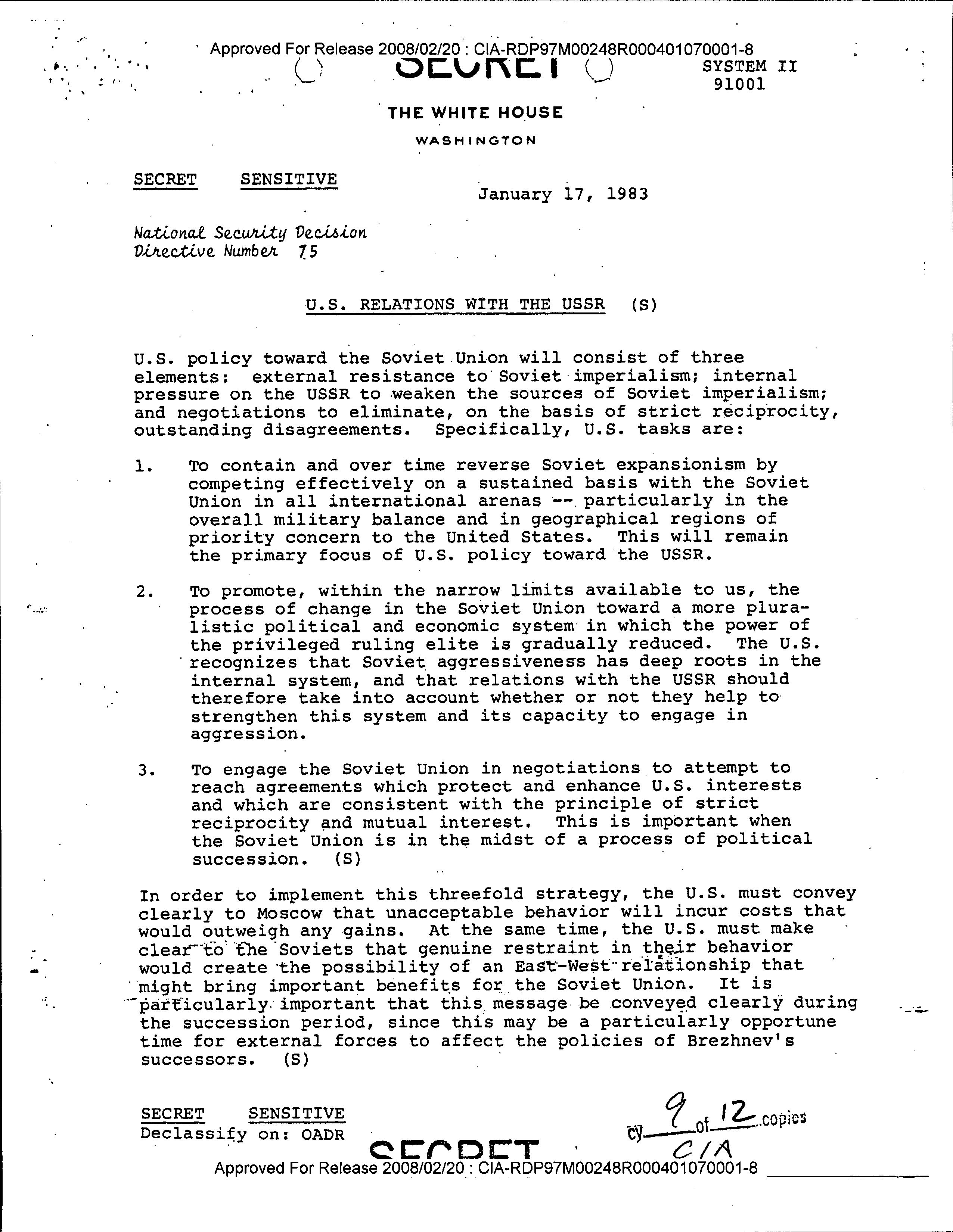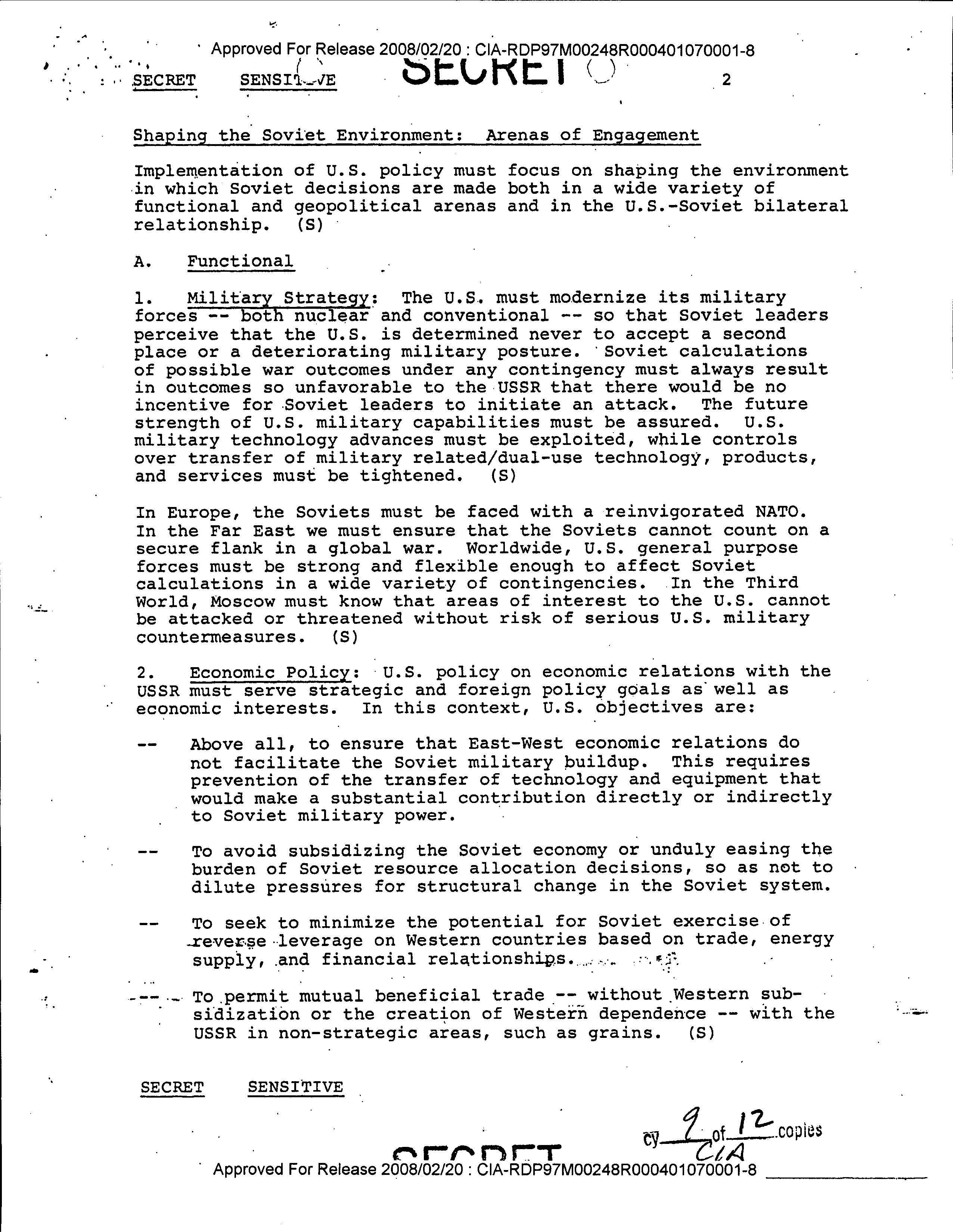We heard last week that several top policy people at the State Department left their positions. The State Department has a culture of very lenient diplomacy where few governments are ever disciplined or rebuked for decisions and actions that counter agreements, treaties, human rights and more. Iran is the topic example.
Now we have the next level of State Department personnel that are pushing back hard on President Trump’s Executive Order on suspension of travel visas and travel bans from listed countries. Secretary of State nominee, Rex Tillerson when confirmed will have a rank and file challenge on his hands.
Perhaps those behind the signatures on this dissent letter could answer some questions on the recommendations made by the 9/11 Commission Report where the entire chapter was dedicated to immigration of which every member of Congress, both sides of the aisle signed in approval to accept the recommendations and work to implement. (Pre 9/11 status quo has infected diplomacy again)
Countless foreign service officers have drafted a memo to the White House.
LawFareBlog: Numerous Foreign Service officers and other diplomats have drafted a dissent memo expressing opposition to President Donald Trump’s executive order banning refugees and immigrants from Iran, Iraq, Libya, Somalia, Sudan, Syria, and Yemen from entering the United States. ABC reported this morning on the draft, which is likely to be submitted today.
Here’s a copy of the actual draft. We are hearing that literally hundreds of foreign service officers are planning to be party to the dissent memo; it’s still unclear exactly how many. We have redacted all names and personally identifiable information from this document.
**
(First page on the left) The State Department’s Dissent Channel is a mechanism for employees to confidentially express policy disagreement, created in 1971 as a response to concerns within the Department over the government’s handling of the Vietnam War. Authors of a memo submitted through the Channel, which is open to all regular employees of the State Department and USAID, may not be subject to any penalty or disciplinary action in response. Once a memo is submitted, the Secretary of State’s Policy Planning Staff must acknowledge its receipt within two working days and will usually distribute it to the Secretary of State, the Deputy Secretary of State, the Under Secretary for Political Affairs, the Chairperson of the Open Forum, and, if the memo’s author is employed by USAID, by the head of that agency as well. Taking into account the wishes of the author, the memo may also be distributed more broadly within the State Department and may be done so anonymously.
The ultimate significance of the channel is that memos must receive a substantive response within 30-60 working days






